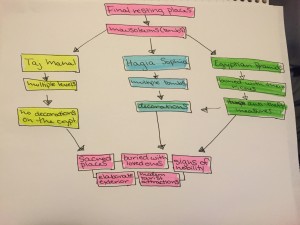Hey y’all. I thought I would dive deeper into what I noticed between Hagia Sophia and Japan’s Ise Grand Shrine. Hagia Sophia was built as a Christian Orthodox church 3 times. The cultural beliefs were to have mosaics, paintings, beautiful architecture, etc. for this structure. It was habit to build from marble, brick, and long-lasting materials so the structure would last a very long time, or at least that was the intent. As a mosque the structure was also changed so that it incorporated the beliefs and habits of the Muslims such as Minarets, Mihrab, medrese, Imaret, Sadirvan, etc. There was no belief of renewing the structure though, because it was built to last each time it was built. These two religions valued superb Byzantine architecture, the mosaics, the paintings, the structure as a place of worship (church and later mosque), and the great minds that built these structures. At one time this structure was the largest cathedral in the world for over a 1,000 years.
On the other hand we have Japan’s Ise Grand Shrine. Japan had a different take when it came to one of their most sacred shrines. Somewhere in the 680’s A.D. Emperor Tenmu established the Sengu ceremony tradition of rebuilding the shrine every 20 years in order to make the shrine last “forever”. The cultural beliefs were to preserve and hand down traditional skills and crafts to the succeeding generations and convey the roots of Japanese culture. The cultural habits were to rebuild the shrine with wood, thatch, etc., simple materials that could be reused and renewed for many generations to come. Sacred treasures were moved to the new shrines and they would worship in these shrines for another 20 years until it was time to renew them. Some of the values from the Japanese were the crafts and skills of carpenters and other artisans to be passed down to the next generations, renewing their structure so it would last “forever”, and to continue their culture through this practice from generation to generation.


